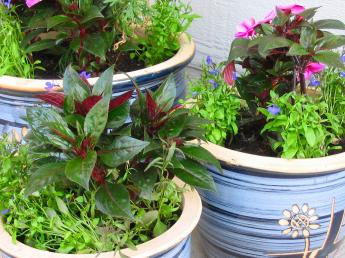Winter Care For Foliage Houseplants

Winter weather adversely affects growing conditions for houseplants. Proper care during the winter months can help insure the health of houseplants.
Any plant purchased during the winter should be carefully wrapped by the retailer and protected from cold on the way home. Place the plant inside a heated car if the journey home is of any length, and at all costs avoid putting tender plants in the unheated boot of a car. Winter-purchased plants will be the most difficult to establish indoors and should be carefully unwrapped, watered if necessary, and placed in a temperature of around 18 degree celsius in reasonable light to give them the best possible chance of adjusting to an entirely new set of conditions. Almost all plants will have been grown in heated greenhouses and will take unkindly to a sudden lowering of temperature. Winter feeding should not be necessary, but plants bought at other times should be fed soon after they are brought indoors, and feeding should continue on a regular basis while they are in active growth. Plants bought in summer that are obviously too large for their growth pots can to advantage be potted into slightly larger containers without too much delay.
Most houseplants grow well with daytime temperatures of 65 to 75 degrees F and night temperatures of 60 to 65 degrees F. Temperatures below 50 degrees F or rapid temperature fluctuations may damage some plants. Keep houseplants away from cold drafts, radiators, and hot air vents. Also make sure houseplant foliage doesn't touch cold windows.
Many houseplants prefer a humidity level of 40 to 50 percent. Unfortunately, the relative humidity found in many homes during the winter months may be only 10 to 20 percent -- a level too low for many houseplants. Humidifiers are an excellent way to increase the relative humidity in a single room or throughout the entire home. Simple cultural procedures can also increase the relative humidity around houseplants. Group plants together. The water evaporating from the potting soil, plus water lost through the plant foliage (transpiration), will increase the relative humidity in the immediate vicinity of the houseplants. Another method is to place the houseplants on trays (saucers) filled with pebbles or gravel and water. The bottoms of the pots should be above the water level.
Misting houseplants is not an effective method to raise relative humidity. Misting would have to be done several times daily to appreciably raise the humidity level and is simply not practical.
In general, houseplants require less frequent watering during the winter months than in spring and summer. Actively growing plants need more water than those at rest during the winter months.
Plant species also affects watering frequency. Ferns prefer an evenly moist soil and should be watered relatively frequently. Cacti and succulents, on the other hand, should not be watered until the potting soil is completely dry. The majority of houseplants fall between these two groups. Most houseplants should be watered when the soil is barely moist or almost dry to the touch.
When watering houseplants, water them thoroughly. Water should freely drain out of the bottoms of the pots. If the excess water drains into a saucer, discard the water and replace the saucer beneath the pot.
Houseplants need to be fertilized periodically when actively growing in the spring and summer. Fertilization is generally not necessary during the winter months because most plants are growing very little or resting. Indoor gardeners can begin to fertilize houseplants in March or April as growing conditions improve and the plants resume growth. Fertilizers are available in numerous forms: liquids, water soluble powders, tablets, spikes, etc. Regardless of the fertilizer type, carefully read and follow label directions.
Dust and grease often accumulate on the leaves of houseplants. The dust and grease not only makes them unattractive, it may slow plant growth. Cleaning houseplants improves their appearance, stimulates growth, and may help control insects and mites.
Large, firm-leafed plants may be cleaned with a soft sponge or cloth. Wash the foliage using a very mild solution of dishwashing soap and tepid water. Another method is to place the plants in the shower and give them a good "bath". Be sure to adjust the water temperature before placing the plants under the shower head.









0 Comments:
Post a Comment
<< Home